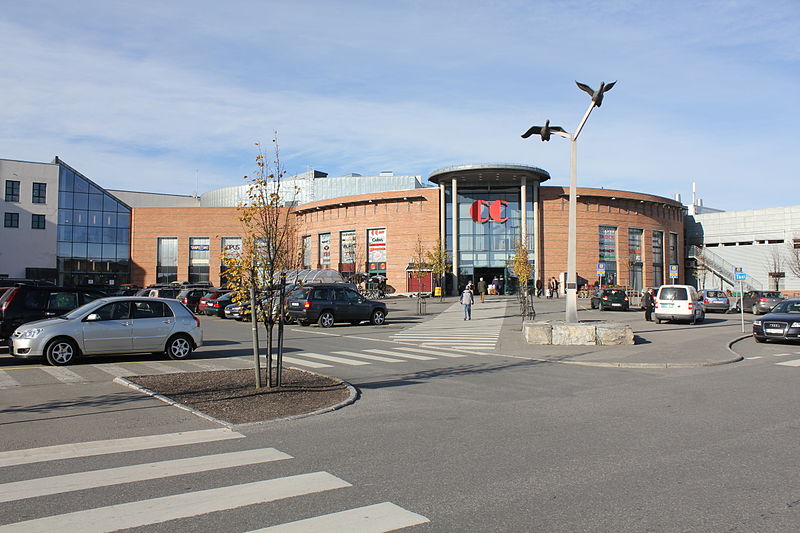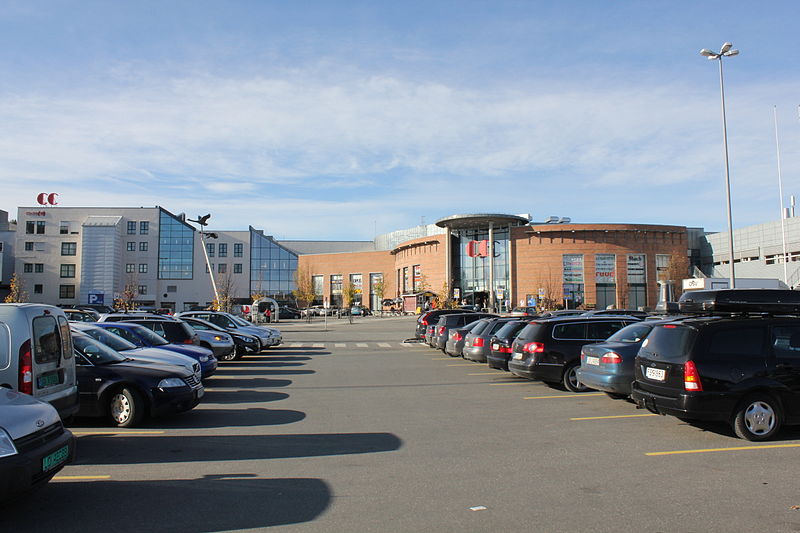


|
Joined:
|
28/01/2011 |
|---|---|
|
Last Updated:
|
28/01/2011 |
|
Location:
|
Gjøvik, Norway |
|
Climate Zone:
|
Cold Temperate |
|
Gender:
|
Male |
|
Web site:
|
permaliv.blogspot.com/ |
(projects i'm involved in)
(projects i'm following)
Back to Øyvind Holmstad's profile
Posted by Øyvind Holmstad about 13 years ago
The problem is that we are adapting to the wrong things — to images, or to short-term greed, or to the clutter of mechanics. These maladaptations are known as “antipatterns” — a term coined not by Alexander, but by software engineers. An antipattern is something that does things wrong, yet is attractive for some reason (profitable or easy in the short term, but dysfunctional, wasteful of resources, unsustainable, unhealthy in the long term). It also keeps re-appearing. Sounds like our economy and wasteful lifestyle? - Michael Mehaffy and Nikos Salingaros
 |
| CC Gjøvik, an example of a multilayered antipattern |
The permaculture focus is on tracking patterns in nature and design, to create pleasure for ourselves and to find good examples for the world. Patterns work in a multitude of connections with their surroundings, and the more connections there are, the richer are the pattern languages the patterns are part of.
Unfortunately, although our pattern languages might have a deep poetry, not all people feel attracted to their harmony (meaning "the quality without a name"). Today’s disconnected people are attracted by antipatterns, this is because they are profitable or easy in the short term, and human nature is greedy and lazy. We are short term thinkers — in a world of competition the winner takes it all, and today’s capitalism is all about materialism.
Antipatterns are dysfunctional, wasteful of energy and resources, unsustainable and unhealthy in the long term, and they violate the human scale. Still, they are so seductive in their grand scale, and we are overwhelmed by their appearance and shiny surfaces. In fact, we have even made them our new temples!
 |
| Entering the consumerist temple |
Further, antipatterns are disconnected, anti-fractal and non-adapted, the opposite of natural systems. With patterns found in nature and traditional culture we can identify three characteristics:
Some think that we can change the world through wonderful patterns and pattern languages — like the way we feel attracted to a meadow of flowers we can’t understand how people can resist such beauty. But how many meadows are bulldozed for profit and ease? In this world harmony and balance come second to greed and speed. We can’t change human nature, so what we should do is to identify, fight and prohibit antipatterns. If not these antipatterns will sooner or later strangle and eliminate our living patterns, as they are fed with immense amounts of capital, energy and resources.
This doesn’t mean we should not create a lot of permaculture projects around the world. We should! We need them as positive examples to contrast the antipatterns, so that people can see and understand how insane they are, and can see that alternatives exist. But we cannot expect permaculture technology to conquer the world before antipatterns are fought back!
Another sign of antipatterns is that they look the same around the world, because they are forced structures created out of a blueprint. Patterns on the contrary always attempt a new shape, adapting to local conditions.
 |
| This shopping mall in Poland has the same attention-getting expression as the shopping mall of my town in the top picture, identifying them both as antipatterns. To quote Michael Mehaffy and Nikos Salingaros: "While the initial prices might appear cheap, the real cost is deferred until much later, in the “externalities” of environmental degradation, social isolation and decay of long-term quality of life." Photo: Gaz777, Wikimedia Commons. |
The shopping mall of my town consists of several antipatterns, making it a multilayered antipattern. To call it an antipattern language makes no sense, as clusters of antipatterns doesn’t create languages, just noise, keeping no information about life and what it means to be a human being. I have identified four antipatterns of the mall CC Gjøvik, which are all contrasted by an Alexandrine pattern from A Pattern Language.
Antipattern 1, contrasted in the Alexandrine pattern 87, Individually Owned Shops:
Problem
When shops are too large, or controlled by absentee owners, they become plastic, bland, and abstract.
Solution
Do what you can to encourage the development of individually owned shops. Approve applications for business licenses only if the business is owned by those people who actually work and manage the store. Approve new commercial building permits only if the proposed structure includes many very very small rental spaces.
The problem with CC Gjøvik is not just that the shops are too large, but the mall itself is far too large — it might be the largest shopping mall between Oslo and Trondheim. It is situated just outside the core of central town, like a big sponge leaving the town center like lifeless dry land. And not just the town, but villages from all over the region, as everybody wants to go to the largest shopping mall around Lake Mjøsa. It’s like a magnet tapping the surrounding economies for much needed capital.
In America they have come up with a great idea, Small Marts. This is splendid, but for them to thrive antipatterns like CC Gjøvik need to be erased. Unfortunately, for the time it’s growing, just like uncontrolled cancer, recently adding another 7000 square meters.
Pattern 87 is described extensively in my earlier PRI-article: The Ancient Taberna in a Future World.
Antipattern 2, contrasted in the Alexandrine pattern 22, Nine Per Cent Parking:
Problem
Very simply - when the area devoted to parking is too great, it destroys the land.
Solution
Do not allow more than 9 per cent of the land in any given area to be used for parking. In order to prevent the "bunching" of parking in huge neglected areas, it is necessary for a town or a community to subdivide its land into "parking zones" no larger than 10 acres each and to apply the same rule in each zone.
 |
| My dream is that this can someday be transformed from a car park into the Lake Mjøsa Park, or in Norwegian "Mjøsparken" |
Antipattern 3, contrasted in the Alexandrine pattern 104, Site Repair:
Problem
Buildings must always be built on those parts of the land which are in the worst condition, not the best.
Solution
On no account place buildings in the places which are most beautiful. In fact, do the opposite. Consider the site and its buildings as a single living eco-system. Leave those areas that are the most precious, beautiful, comfortable, and healthy as they are, and build new structures in those parts of the site which are least pleasant now.
Although it was a sawmill on the site where CC Gjøvk was built, to where timber was transported with barges from around the lake, this place should have been transformed into something much more valuable than a shopping mall — to something like a park, to increase the contact between the town and the lake. I don’t see any possibility for transformation here, but rather just the eradication of this maladapted mall is appropriate, after which we can worship queen Mjøsa rather than king Mammon.
 |
| Queen Mjøsa seen from Eiktunet, a small folk museum of Gjøvik. Rather than worshiping her with parks and beauty, my town is constantly mocking her with hostile structures down by her shores. |
Antipattern 4, contrasted in the Alexandrine pattern 25, Access to Water:
Problem
People have a fundamental yearning for great bodies of water. But the very movement of the people toward the water can also destroy the water.
Solution
When natural bodies of water occur near human settlements, treat them with great respect. Always preserve a belt of common land, immediately beside the water. And allow dense settlements to come right down to the water only at infrequent intervals along the water's edge.
If there is something the politicians of Gjøvik have been very clever to do, it is making barriers between the town and the lake, separating people from the greatest inspiration for living here, Lake Mjøsa — like the triple barrier of CC Gjøvik, the parking areas and the RV. 4 highway. How could my politicians establish a highway down by the shores of Lake Mjøsa? The answer is that they see the world as parts, not as wholes. Soon the whole town will consist of parts only. How can one then be whole as a human being?
 |
| At the back side of CC Gjøvik, toward Strandgata (the "beach street" in English, although the beach can no longer be seen). From this parody of an "arcade" you can really feel the "technology of death". |
To deal with all these antipatterns of our world we need strong tools. These tools are to be found in the radical technology of Christopher Alexander. Read about these technologies in the great essays by Michael Mehaffy and Nikos Salingaros in Metropolis Magazine, they are all to be found here.
In spite of the despair I feel when confronted with such a life-destroying, inhuman and unsustainable antipattern like CC Gjøvik, Christopher Alexander gives me hope for a radically new future. A future where antipatterns are not the common, but a future dominated by deeply rooted and strongly interconnected permaculture patterns and languages.
This article is published at The Permaculture Research Institute of Australia on December 6, 2011.
You must be logged in to comment.

| Permaculture Design Course |
| Type: Permaculture Design Certificate (PDC) course |
| Teacher: Aranya Austin |
| Location: Orreviks Gård, Sweden |
| Date: Jul 2011 |